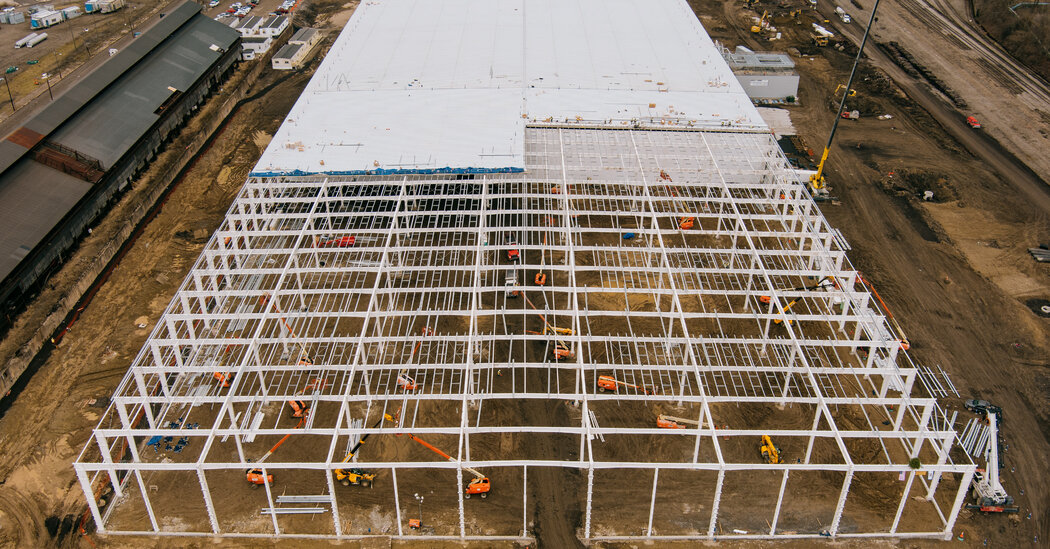Trump has suggested he would dismantle the Inflation Reduction Act, which has reshaped America’s energy landscape. It won’t be easy.
Over the last two years, a surge in clean energy manufacturing has helped push U.S. factory construction to the highest level in half a century. Solar power installations and electric car sales are breaking records. Even Republican-led states like Montana and Utah are writing climate plans to secure federal cash.
Yet the law driving this dizzying transformation of America’s energy landscape, the 2022 Inflation Reduction Act, is facing a highly uncertain future as next week’s election looms.
If he returns to the White House, former President Donald J. Trump has suggested he would gut the law, which is expected to pour as much as $1.2 trillion over the next decade into technologies to fight climate change such as wind turbines, solar panels, nuclear reactors, carbon capture and E.V.s, as well as the factories to supply them.
“My plan will terminate the Green New Deal, which I call the Green New Scam,” Mr. Trump said in September, using his catchall phrase for climate policies. “We will rescind all unspent funds under the misnamed Inflation Reduction Act.”
By contrast, Vice President Kamala Harris, who cast the law’s tiebreaking vote in the Senate, hopes to accelerate the growth of clean energy to slash greenhouse gas emissions, though that would require speeding up federal permits while overcoming local opposition and electric grid constraints.
While the Inflation Reduction Act is billed as the biggest climate law in United States history, analysts say it is too early to judge its impact.
